Caring and connecting on North Bruny
Bruny Island
It's a place where you seem really close to the elements, and for us it's really special to live where we do where we're surrounded by really interesting natural phenomena. I mean, we live in a hot spot for the forty-spotted pardalote, for instance. That's pretty extraordinary.
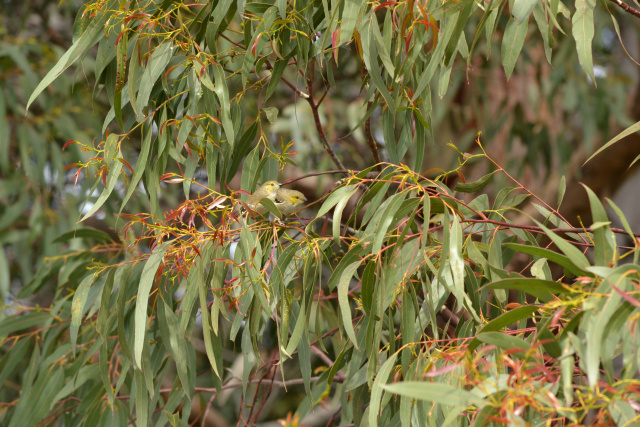
We can see swift parrots without going very far. We can see whales off the coast. I do look out there and I think it's probably a desert compared with what it was when Europeans came here. But at least we have some contact with it.
The other morning we went out to the point and we saw whales, we saw gannets diving. There was a seal underneath us. That's priceless - and we just went out there for a walk before breakfast.
It's increasingly obvious to me that this is an extraordinary place on a planetary level. I think our involvement in that work to look after it is probably the most important thing that we can do while we're here.
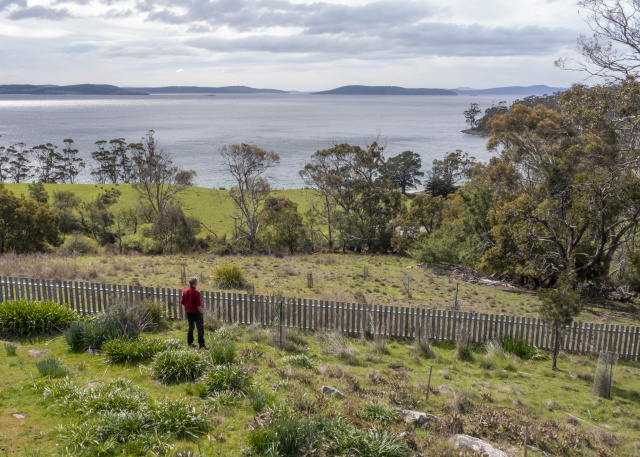
To explain, we have 70 acres here on North Bruny. It's part of one of the earliest European holdings on Bruny Island. It was probably granted in the mid-1820s. It was first owned by James Kelly, a famous seafarer and whaler and so on from the 19th century. And it used to be part of a larger holding. It's surrounded by forests that have the forty-spotted pardalotes living in them. It goes down to the high water mark, which is pretty rare.
We grow a lot of trees. We have been growing trees since we started here, and putting them out using local seed stock. Then, more recently, we've become involved in the Threatened Woodland Birds of Bruny Island project.
Our job coming here has been to try and help repair the land, which we do using regenerative farming techniques.
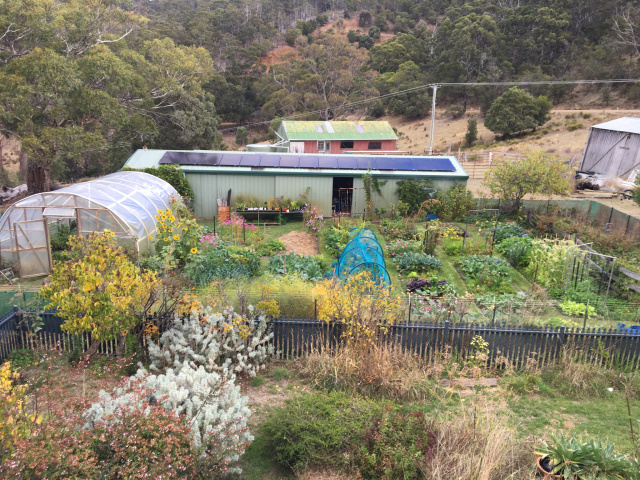
The Threatened Woodland Birds of Bruny Island project is being run by BIEN, the Bruny Island Environment Network. I'm chair of the Friends of North Bruny, and we are a project partner in that. So now we're growing trees for that project. We're part of putting the trees out.
The experience we have - trying to get trees to survive in this environment with a lot of browsing from native animals - is helping with that project. We're helping with organising people to help, through Friends of North Bruny.
All of it seems just really important, valuable work where a lot of the skills that I've had over the years have come to bear. Horticultural skills, organisation skills, all sorts of things.
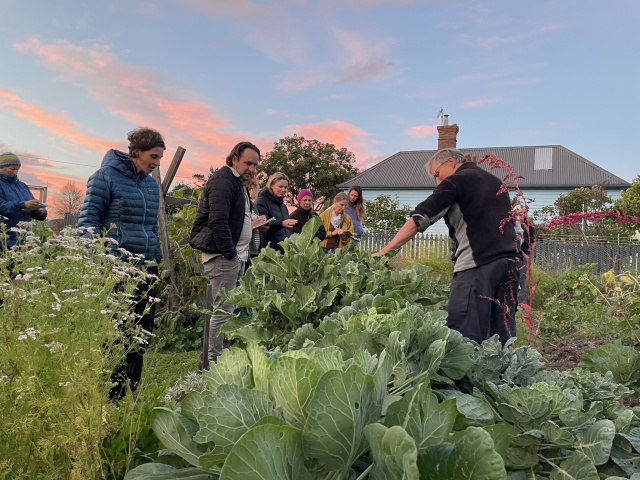
We're growing eucalyptus viminalis, which is white gum - the species that the forty-spotted pardalote needs. We collect seed for that from local trees. We're also growing a type of blue gum, which is called eucalyptus globulus compacta.
It's a very compact, as the name suggests. A compact growing type which is likely to produce flowers much earlier than a standard blue gum will do, to help deliver extra food resources to the swift parrots, earlier than otherwise would be the case, and help them to survive. We've been growing those compact blue gums now for three or four years and in fact we've grown more than a thousand trees in the last 12 months for that project.
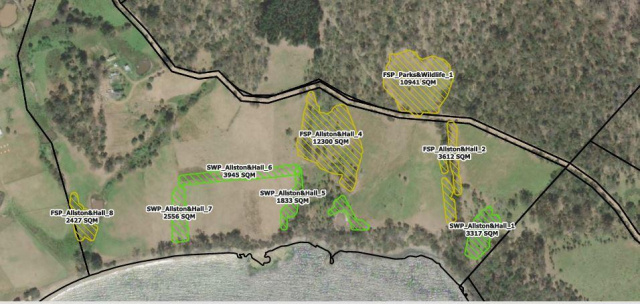
About 320 different trees have gone on to our property in that project in the last two years, plus countless other trees that we've grown that we've also put elsewhere on the property. I saw a map of it the other day and it was very exciting to see all the areas that we got trees into.
At the same time we're running cattle to to help restore the pastures, because we have tunnel erosion here. We really have to have the vegetation strong to try and minimise the erosion. We have black angus, which are very common. But they're hardy and they do really well.
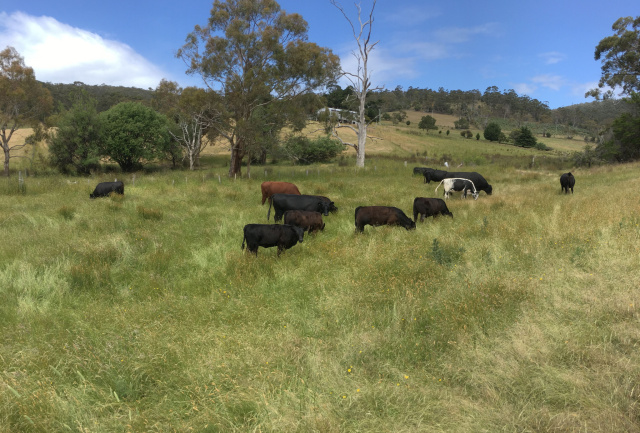
There used to be a big rabbit population on Briny Island and that would have been devastating in this area with the tunnel erosion. It would have caused all sorts of trouble. But we hardly ever see a rabbit now, and the quolls also keep them at bay.
Every now and then you have to stop and just reflect on what you've been doing because otherwise you don't notice it. You can just keep working and you just don't realise how much you've achieved. It's very satisfying.
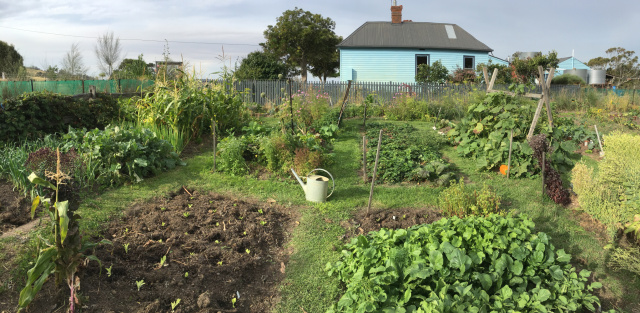
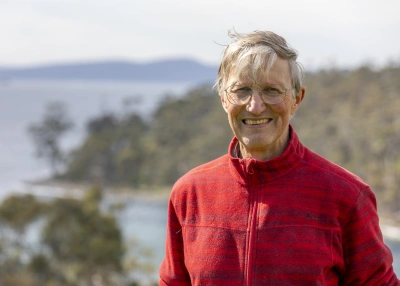
Simon Allston
Friends of North Bruny
It's a place where you seem really close to the elements, and for us it's really special to live where we do where we're surrounded by really interesting natural phenomena. I mean, we live in a hot spot for the forty-spotted pardalote, for instance. That's pretty extraordinary.

We can see swift parrots without going very far. We can see whales off the coast. I do look out there and I think it's probably a desert compared with what it was when Europeans came here. But at least we have some contact with it.
The other morning we went out to the point and we saw whales, we saw gannets diving. There was a seal underneath us. That's priceless - and we just went out there for a walk before breakfast.
It's increasingly obvious to me that this is an extraordinary place on a planetary level. I think our involvement in that work to look after it is probably the most important thing that we can do while we're here.

To explain, we have 70 acres here on North Bruny. It's part of one of the earliest European holdings on Bruny Island. It was probably granted in the mid-1820s. It was first owned by James Kelly, a famous seafarer and whaler and so on from the 19th century. And it used to be part of a larger holding. It's surrounded by forests that have the forty-spotted pardalotes living in them. It goes down to the high water mark, which is pretty rare.
We grow a lot of trees. We have been growing trees since we started here, and putting them out using local seed stock. Then, more recently, we've become involved in the Threatened Woodland Birds of Bruny Island project.
Our job coming here has been to try and help repair the land, which we do using regenerative farming techniques.

The Threatened Woodland Birds of Bruny Island project is being run by BIEN, the Bruny Island Environment Network. I'm chair of the Friends of North Bruny, and we are a project partner in that. So now we're growing trees for that project. We're part of putting the trees out.
The experience we have - trying to get trees to survive in this environment with a lot of browsing from native animals - is helping with that project. We're helping with organising people to help, through Friends of North Bruny.
All of it seems just really important, valuable work where a lot of the skills that I've had over the years have come to bear. Horticultural skills, organisation skills, all sorts of things.

We're growing eucalyptus viminalis, which is white gum - the species that the forty-spotted pardalote needs. We collect seed for that from local trees. We're also growing a type of blue gum, which is called eucalyptus globulus compacta.
It's a very compact, as the name suggests. A compact growing type which is likely to produce flowers much earlier than a standard blue gum will do, to help deliver extra food resources to the swift parrots, earlier than otherwise would be the case, and help them to survive. We've been growing those compact blue gums now for three or four years and in fact we've grown more than a thousand trees in the last 12 months for that project.

About 320 different trees have gone on to our property in that project in the last two years, plus countless other trees that we've grown that we've also put elsewhere on the property. I saw a map of it the other day and it was very exciting to see all the areas that we got trees into.
At the same time we're running cattle to to help restore the pastures, because we have tunnel erosion here. We really have to have the vegetation strong to try and minimise the erosion. We have black angus, which are very common. But they're hardy and they do really well.

There used to be a big rabbit population on Briny Island and that would have been devastating in this area with the tunnel erosion. It would have caused all sorts of trouble. But we hardly ever see a rabbit now, and the quolls also keep them at bay.
Every now and then you have to stop and just reflect on what you've been doing because otherwise you don't notice it. You can just keep working and you just don't realise how much you've achieved. It's very satisfying.

You might like...

Growing up wild and healthy

Bruny Island launch: Dr Tonia Cochran on its global significance

Bruny Island launch: Cat Davidson on falling in love with Nature

Bruny Island launch: Bob Graham on the hidden world behind the photos
Newsletter
Sign up to keep in touch with articles, updates, events or news from Kuno, your platform for nature
